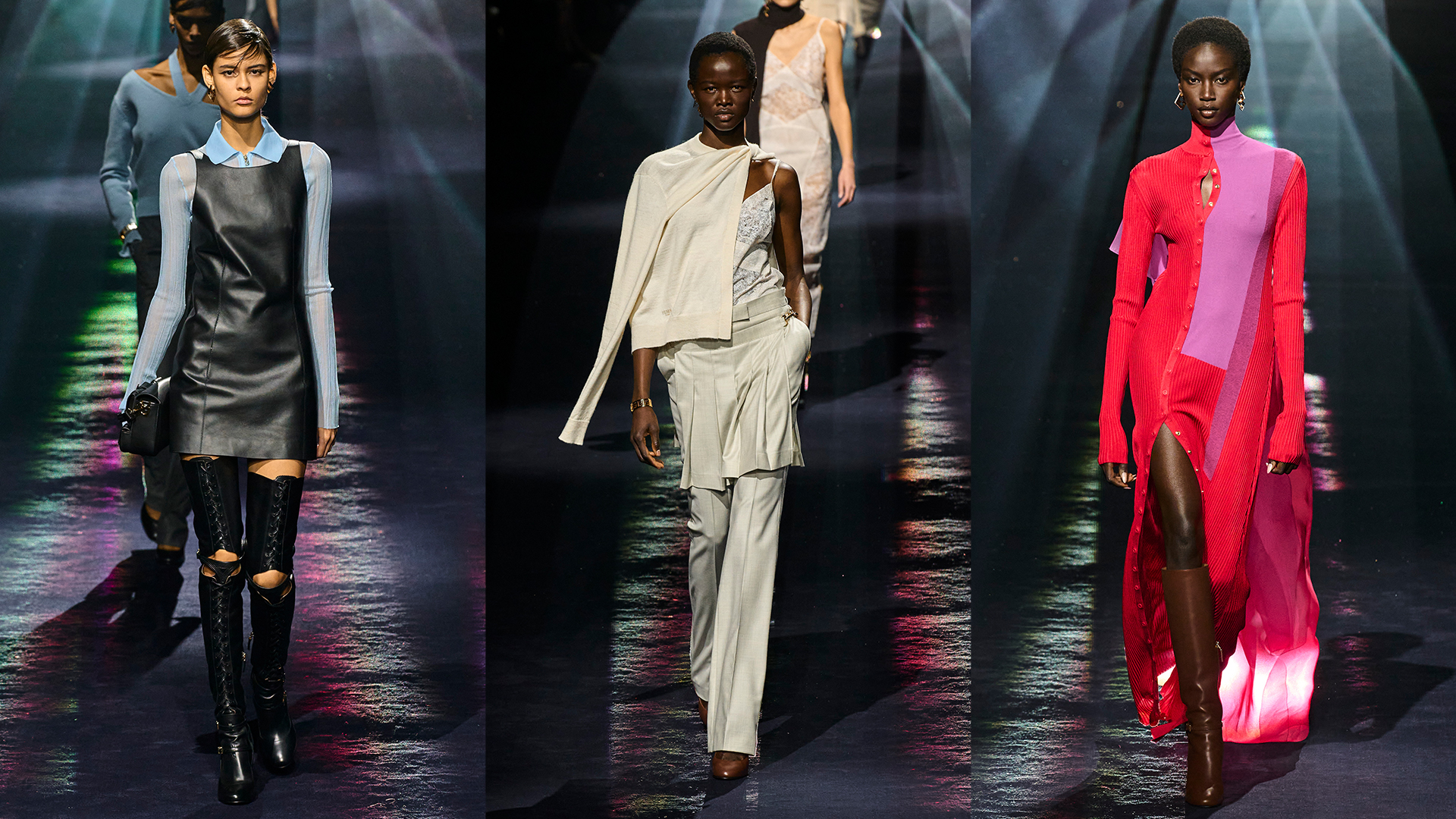Fendi’s latest show began with a laser light show, rainbow-spectrum strobes zipping through the dark catwalk staged at the brand’s Milan showroom. It set the tone for something brooding, perhaps even a bit sci-fi, to emerge from the shadows. Instead, what became clear from the first few looks of Kim Jones’ AW23 collection for the house was a sense of something lighter and much more quotidian; a wardrobe of daywear grounded in reality that felt like an antidote to the ornate negligée gowns that they showed for Fendi’s couture last month,or even the hyper-luxe furs and logomania that the late Karl Lagerfeld established as the house’s DNA. This was a collection that ostensibly examined the uniforms of our lives, perhaps even our childhoods — and twisted every piece to create something more complex. It offered a delicious paradox of uniforms for individualists, archetypes of austerity reimagined in luxurious splendour. “That duality is very Fendi, as is the idea of something which appears simple but, in reality, is very complex,” Silvia Venturini Fendi, the house matriarch and the designer of its menswear and accessories, reminded us in her statement.
As the show progressed, it offered the hallmarks of a traditional wardrobe, much of which was borrowed from menswear: apron pleated skirts, blue cotton shirts, grey sweaters, beige macs, charcoal tailoring — it all hinted at school uniforms; simple clothes designed to transcend time or status. Kim is British, after all, and what Brit doesn’t love a uniform? However, this being Fendi, it’s all about standing out from the crowd, pledging your allegiance with double-F monogram earrings and an array of new bags. Every piece of clothing that hinted at uniformity was, as Kim described it, “twisted”. Those Catholic schoolgirl shirts had delicate lingerie pressed onto them; waistcoats came backless with caped shoulders; sweaters sinuously writhed around the body as long, open-backed dresses; the macs came with sequin-lined lapels or in Persian lambskin; the schoolyard tailoring elongated and hybridised with workwear jackets. It served as a reminder that although there is a demand for straightforward, timeless clothes at times of socio-economic uncertainty — they also need to be special enough to make us really want to part with our rapidly devaluing cash.
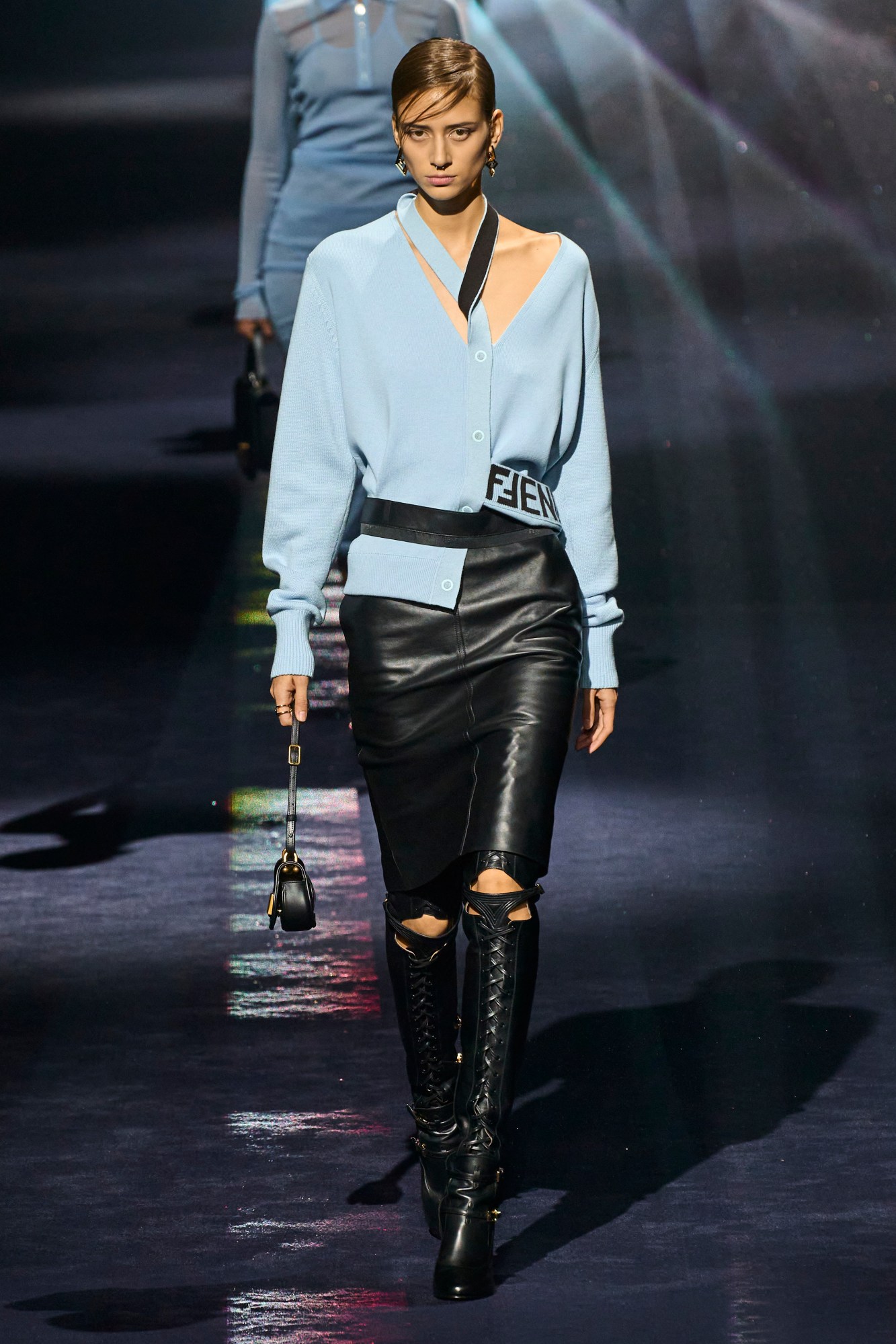
“It’s deconstructed, but luxurious,” Kim explained via the show notes. “There’s a little nod to punk, and my admiration for DIY, but moved on towards something chic.” As with his earlier collections, his muse — remember when designers had muses? — is still Delfina Delettrez Fendi, the fifth-generation Fendi who works with Kim and her mother, Silvia, on the house’s jewellery. “The first day that Delfina walked into work, she was wearing blue and brown, and I thought she looked so great. There’s a chicness but a perversity to the way she twists Fendi, which is what I love,” Kim added. It’s worth noting that Delfina attended a Catholic school in Rome as a young girl, where she wore, you guessed it, blue and brown.
However, it wasn’t all monotone. Towards the end of the show, flashes of colour burst through the otherwise classic lineup, with triple-yarned, ribbed knits in graphic blocks of magenta and red on a bias-cut, popper-secured silhouettes that borrowed from Karl Lagerfeld’s AW96 collection for the house. Diaphonous flutters of gossamer organza trailed behind a couple of the dresses, a prescient reminder that even though we may be withdrawing into classicism and timelessness, there is still room for romance. Now more than ever, it’s important for designers to make us swoon.
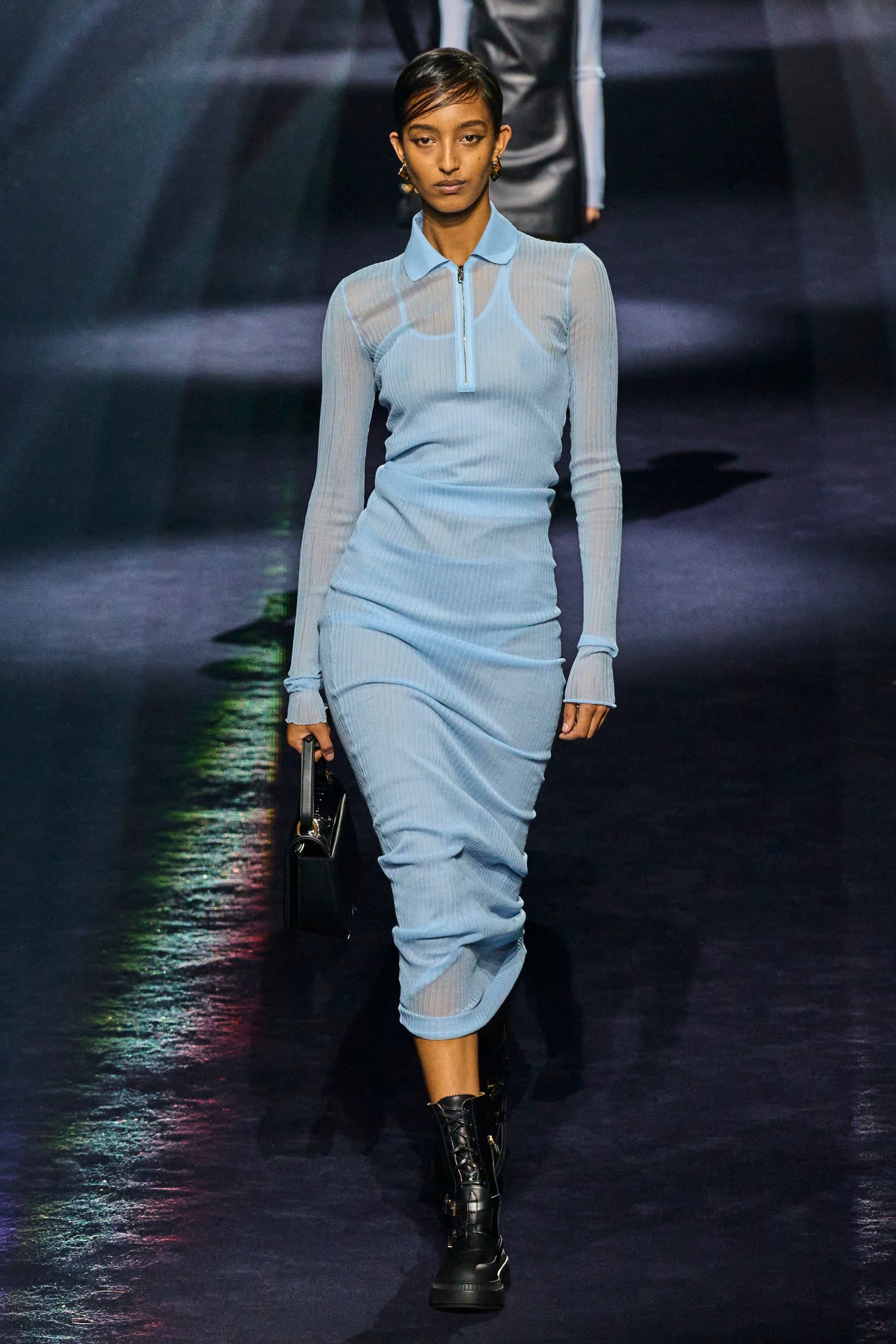
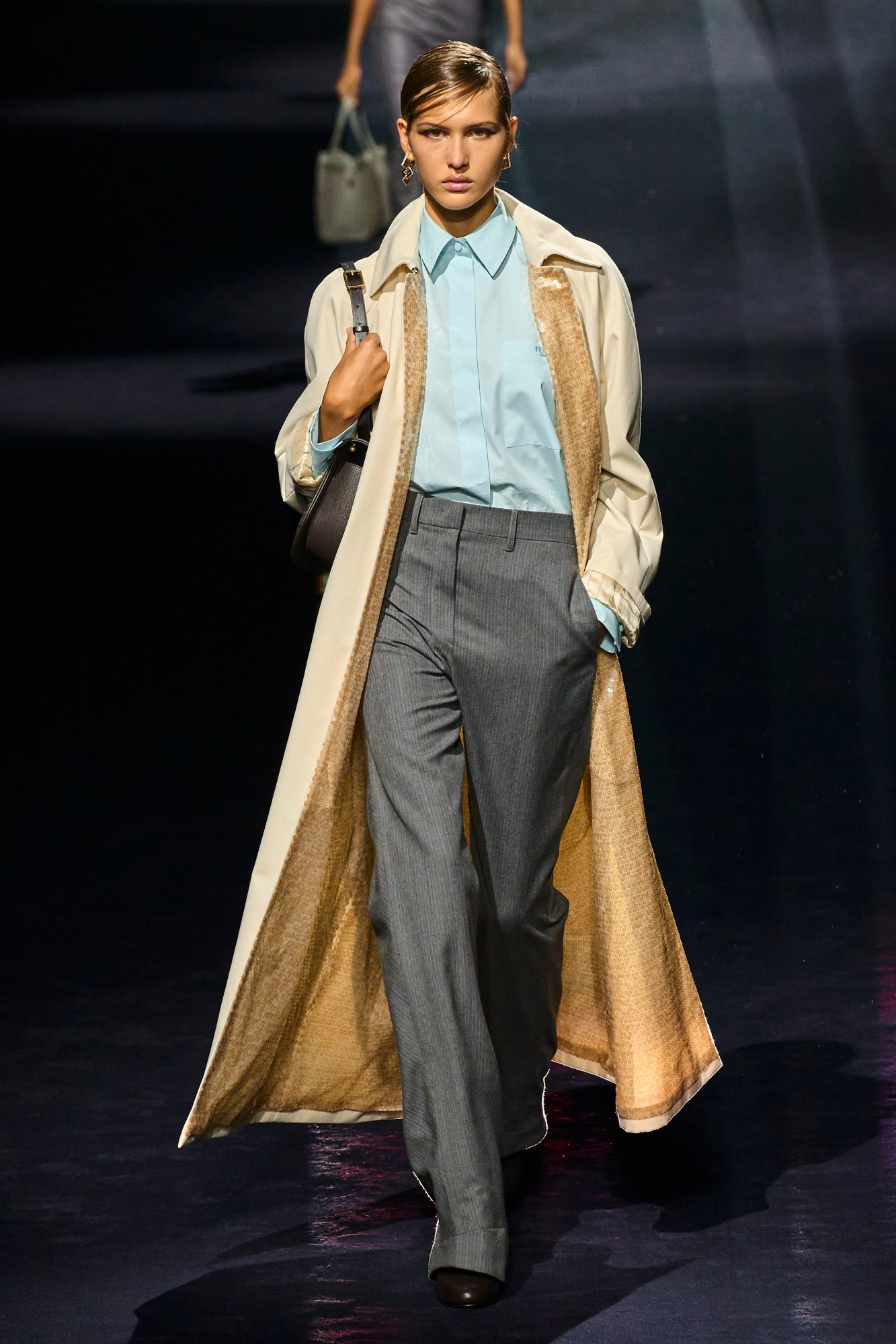
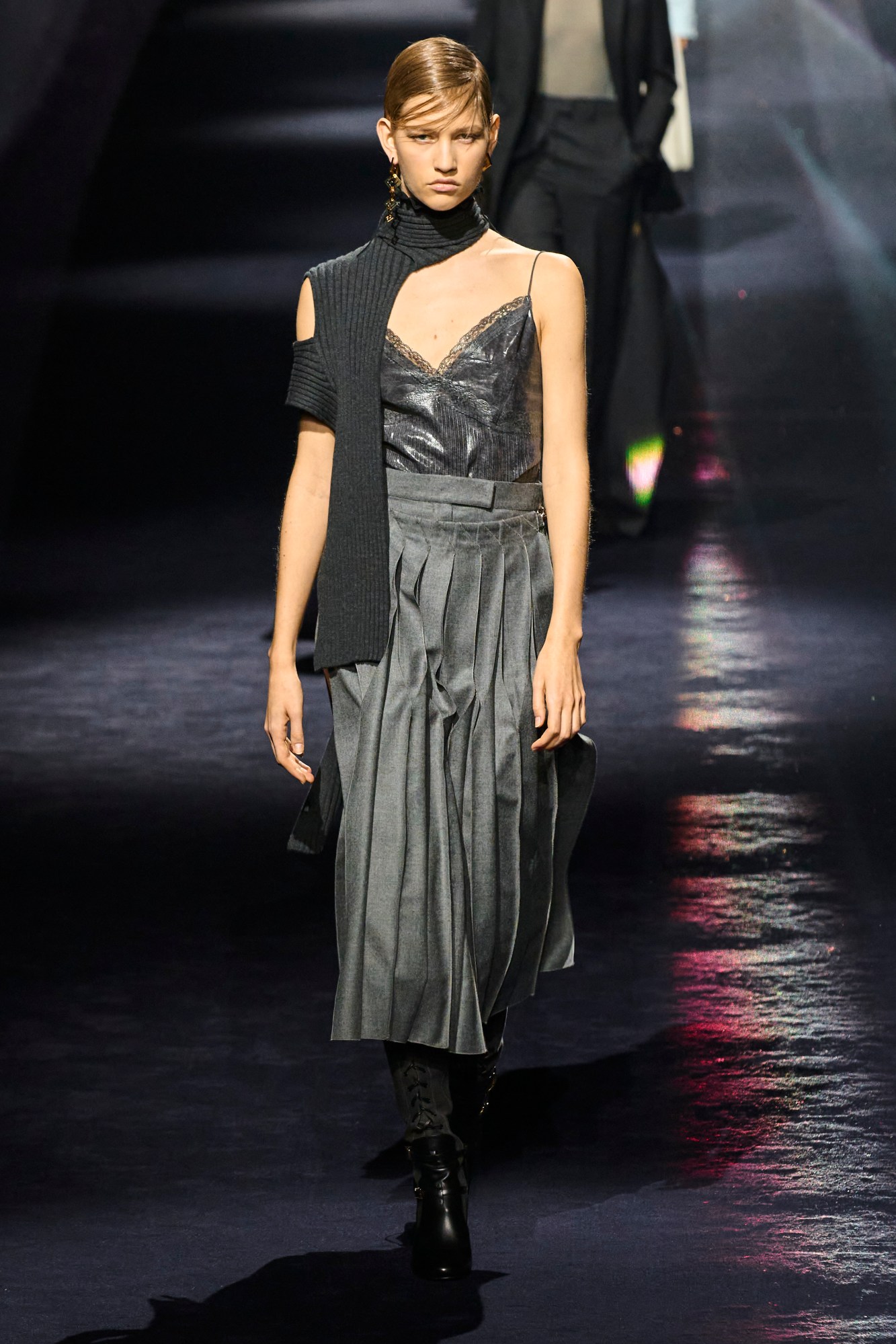
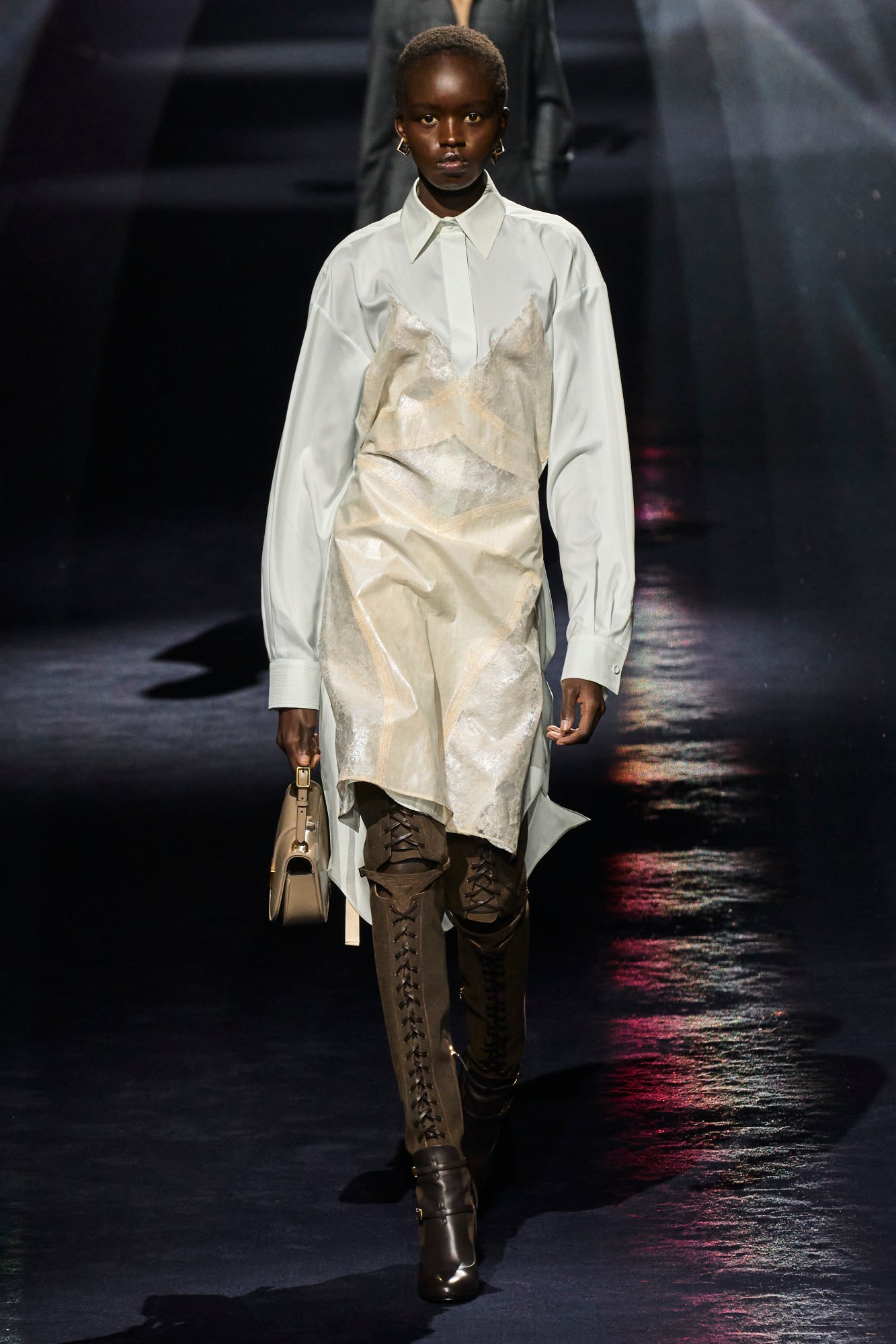
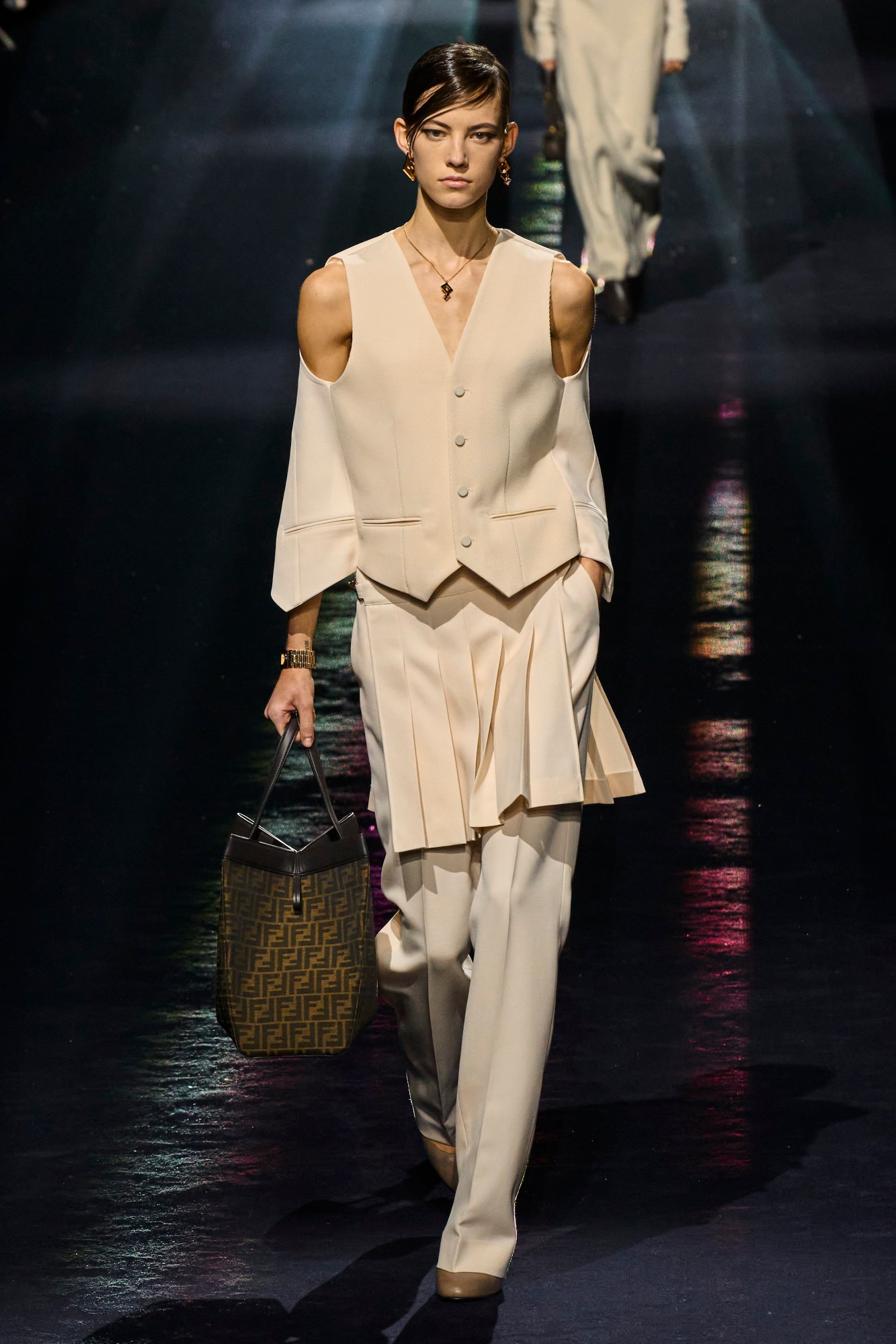
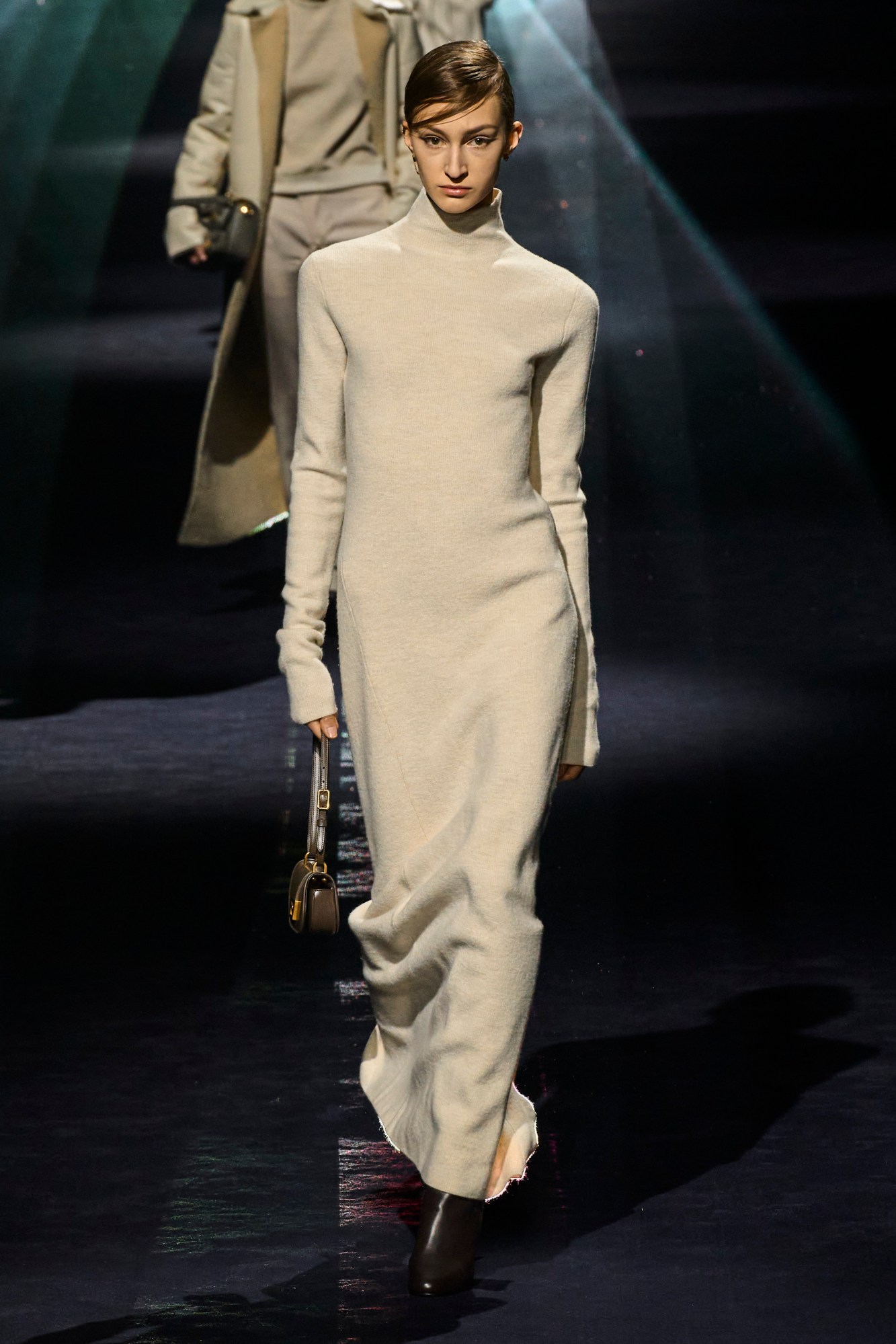
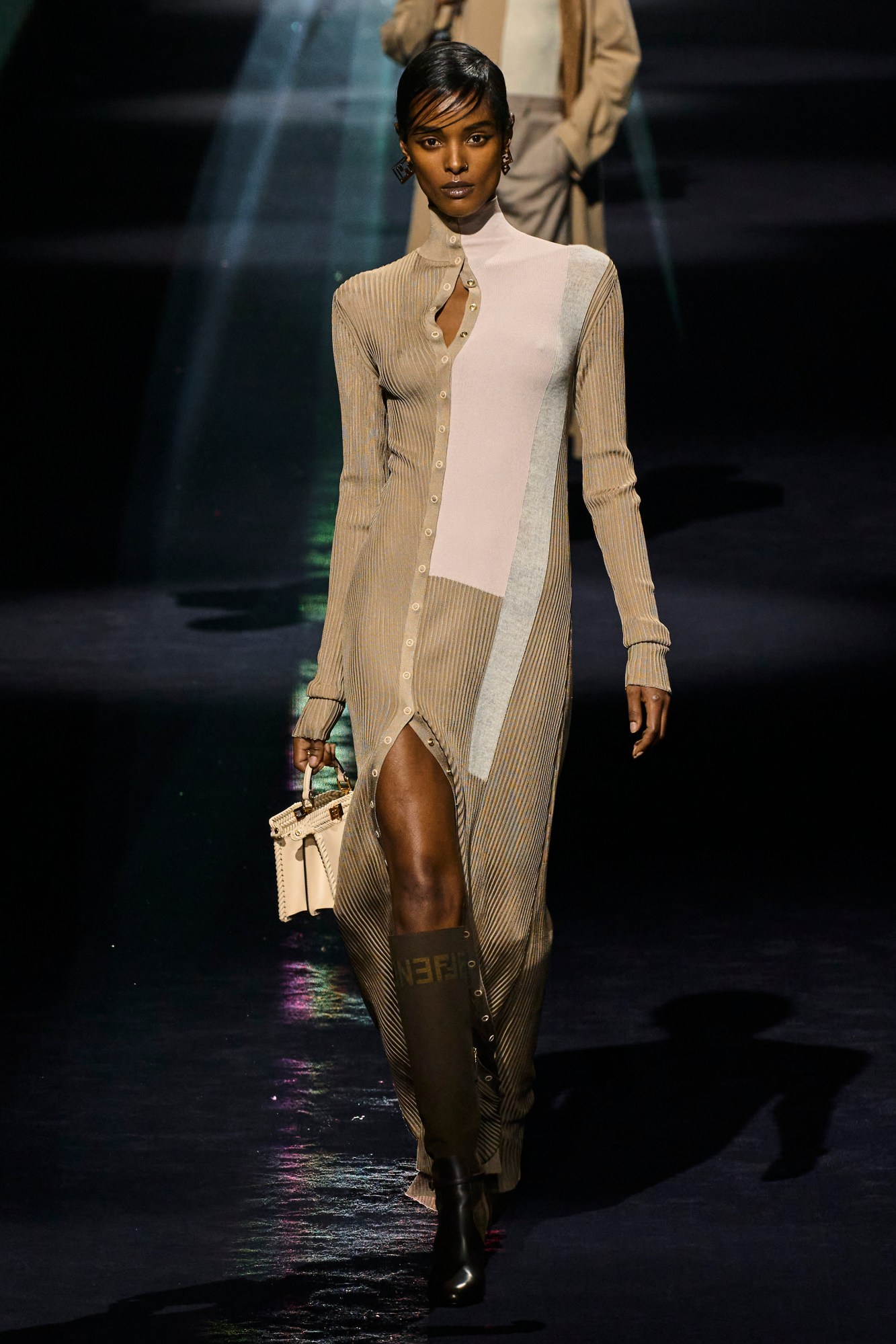
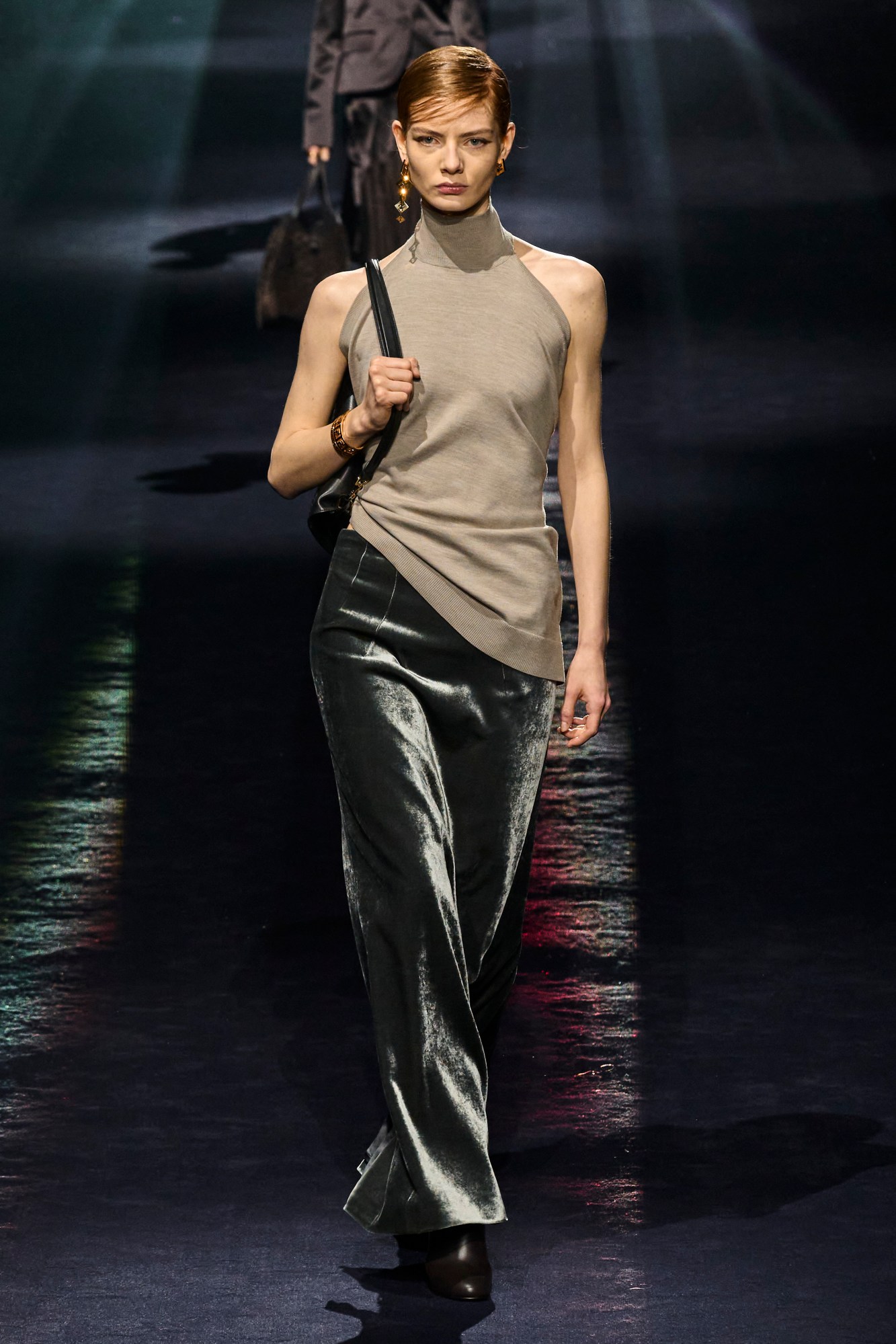
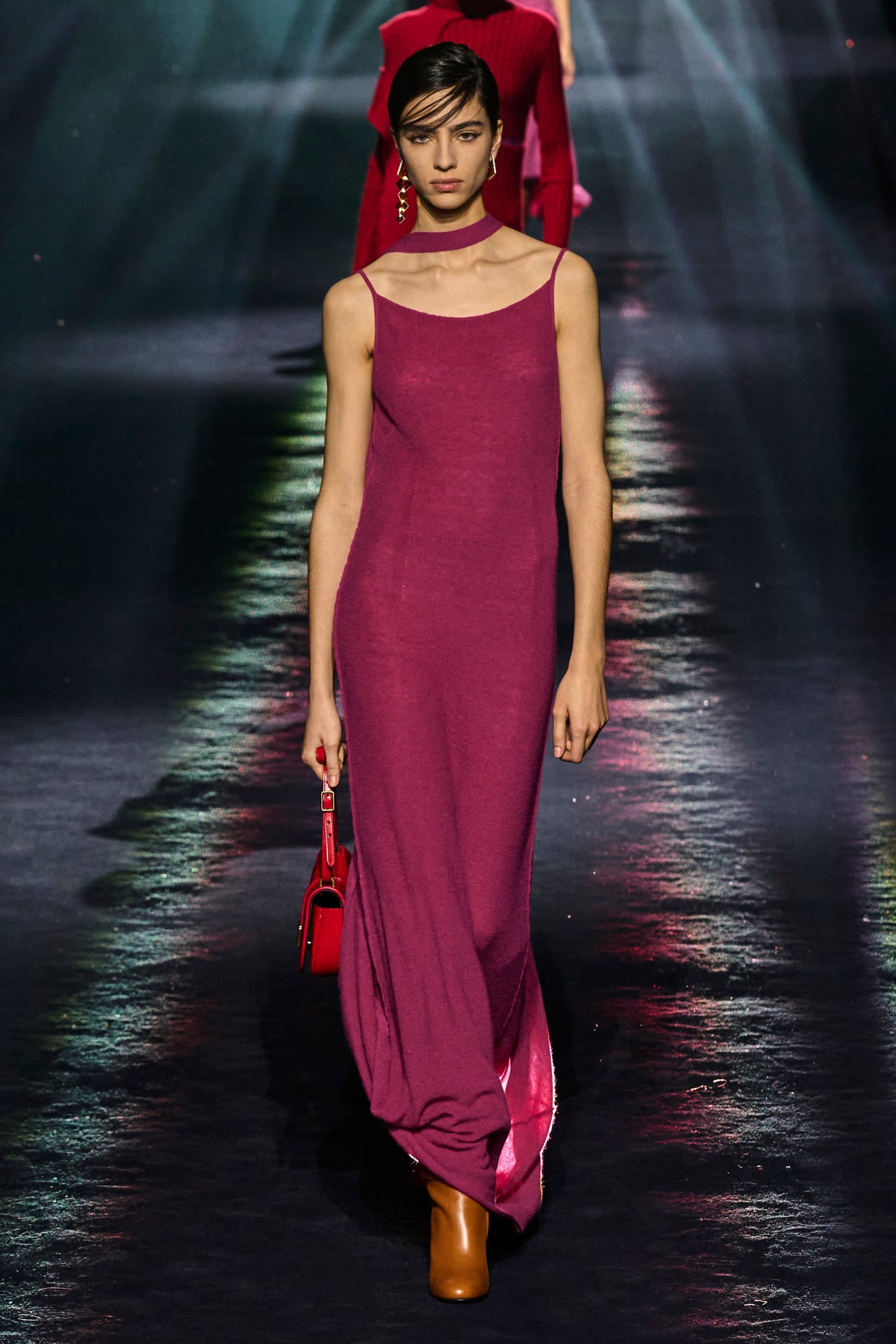

Credits
Images courtesy of Spotlight
